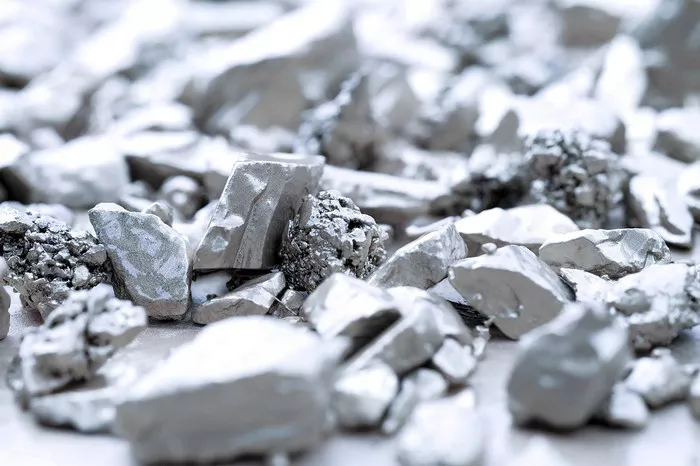Investing in precious metals like silver can be a prudent strategy for diversifying one’s portfolio and safeguarding against economic uncertainties. However, navigating the world of silver investments requires careful consideration and strategic planning. In this comprehensive guide, we will explore the best practices and strategies for buying silver, ensuring that you make informed decisions and maximize your investment potential.
Understanding Silver as an Investment
Before delving into the specifics of purchasing silver, it’s essential to grasp its role within an investment portfolio. Silver is a precious metal with intrinsic value, often used as a hedge against inflation and currency devaluation. Unlike stocks or bonds, which derive their value from external factors such as company performance or interest rates, the value of silver is largely driven by supply and demand dynamics, industrial usage, and investor sentiment.
Setting Investment Goals and Risk Tolerance
As with any investment, it’s crucial to establish clear investment goals and assess your risk tolerance before buying silver. Are you seeking capital preservation, long-term growth, or portfolio diversification? Understanding your objectives will help determine the appropriate allocation of silver within your investment portfolio.
Additionally, consider your risk tolerance—the degree of uncertainty you are willing to endure regarding the fluctuation of silver prices. While silver can offer significant potential returns, it also carries inherent volatility. Assessing your risk tolerance will guide your decision-making process and help avoid emotional reactions to market fluctuations.
Types of Silver Investments
Silver can be acquired in various forms, each with its own advantages and considerations. The primary types of silver investments include:
1. Physical Silver: This includes silver coins, bars, and rounds. Owning physical silver provides tangible assets that can be stored securely. However, it requires storage arrangements and may incur additional costs such as insurance and safe deposit boxes.
2. Silver ETFs (Exchange-Traded Funds): These are investment funds traded on stock exchanges that hold physical silver bullion or invest in silver futures contracts. Silver ETFs offer liquidity and convenience, allowing investors to gain exposure to silver without the complexities of owning physical metal. However, investors do not own the underlying silver directly.
3. Silver Mining Stocks: Investing in companies engaged in silver mining and exploration can provide exposure to the silver market’s potential upside. However, mining stocks are subject to company-specific risks, such as operational challenges and management decisions, in addition to fluctuations in silver prices.
4. Silver Futures and Options: These financial derivatives allow investors to speculate on the future price movements of silver without owning the physical metal. Futures and options trading require a deep understanding of market dynamics and can be highly speculative, suitable for experienced investors.
Factors Influencing Silver Prices
Before making any investment decisions, it’s essential to understand the factors that drive silver prices. Some key influencers include:
1. Supply and Demand Dynamics: Silver prices are influenced by the balance between supply from mining and recycling and demand from various industries such as electronics, jewelry, and solar panels. Changes in industrial production, technological advancements, and global economic conditions can impact silver demand.
2. Inflation and Currency Devaluation: Silver is often viewed as a store of value and a hedge against inflation and currency devaluation. During periods of economic uncertainty or when fiat currencies weaken, investors may flock to silver as a safe haven asset, driving up prices.
3. Geopolitical Events: Political tensions, trade disputes, and geopolitical conflicts can disrupt global supply chains and impact investor sentiment, leading to volatility in silver prices.
4. Interest Rates and Monetary Policy: Silver prices can be influenced by changes in interest rates and monetary policy decisions made by central banks. Lower interest rates and expansionary monetary policies tend to be supportive of precious metal prices.
5. Market Sentiment and Speculation: Investor sentiment and speculative trading activity can also affect short-term price movements in the silver market. Fear, greed, and market psychology play significant roles in driving price fluctuations.
Developing a Buying Strategy
With a solid understanding of silver investments and the factors influencing prices, it’s time to develop a buying strategy tailored to your investment goals and risk tolerance. Consider the following guidelines:
1. Dollar-Cost Averaging: Instead of investing a lump sum at once, consider implementing a dollar-cost averaging strategy by regularly purchasing silver over time. This approach helps mitigate the impact of short-term price volatility and allows you to accumulate silver at different price points.
2. Research and Due Diligence: Before buying silver, conduct thorough research on market trends, supply and demand fundamentals, and geopolitical developments. Stay informed through reputable sources such as financial news outlets, industry reports, and market analysis from trusted experts.
3. Consider Premiums and Fees: When purchasing physical silver, be mindful of premiums charged by dealers, which can vary based on factors such as product type, weight, and market conditions. Additionally, factor in any shipping, insurance, or storage fees associated with owning physical silver.
4. Storage and Security: If opting for physical silver, prioritize secure storage solutions to safeguard your investment against theft, damage, or loss. Consider reputable vaulting services, home safes, or allocated storage options provided by reputable dealers.
5. Diversification: Avoid concentration risk by diversifying your silver holdings across different forms of investment, such as physical silver, ETFs, and mining stocks. Diversification helps spread risk and maximize potential returns across various segments of the silver market.
6. Stay Disciplined and Patient: Investing in silver requires discipline and patience, especially during periods of market volatility. Avoid making impulsive decisions based on short-term price movements and stick to your long-term investment strategy.
Conclusion
Investing in silver can be a rewarding endeavor for investors seeking to diversify their portfolios and hedge against economic uncertainties. By understanding the fundamentals of silver investments, conducting thorough research, and developing a well-defined buying strategy, investors can navigate the silver market with confidence and maximize their investment potential. Remember to stay informed, remain disciplined, and seek guidance from financial professionals when needed. With careful planning and prudent decision-making, silver can serve as a valuable asset within your investment portfolio.


